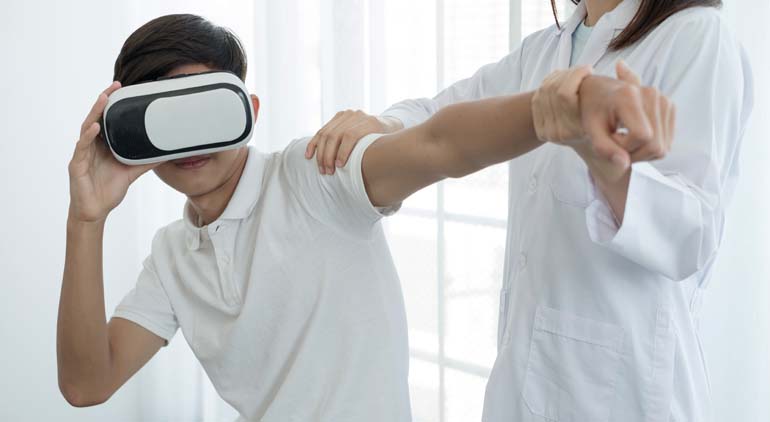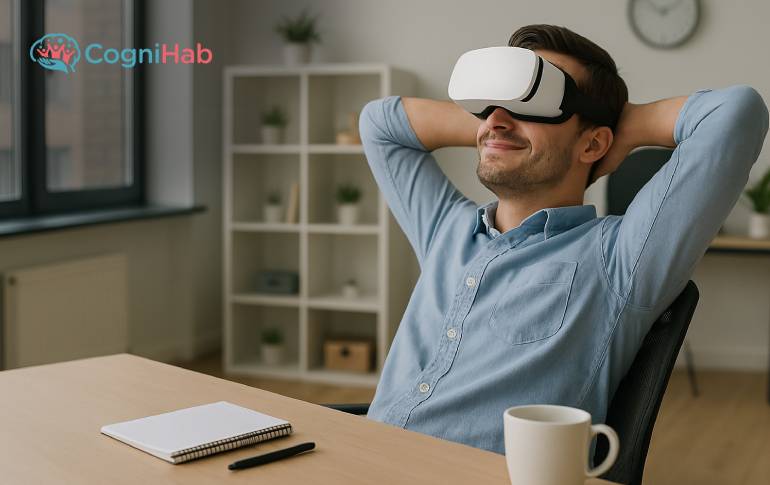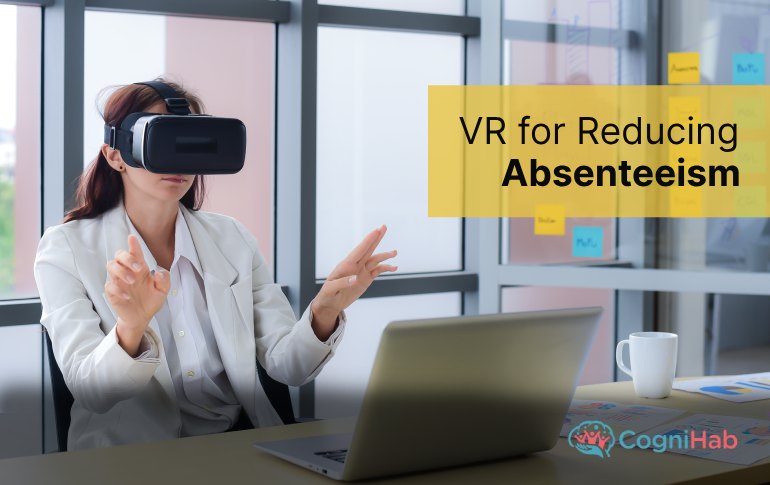What Makes Virtual Reality So Effective in Physiotherapy?
You must engage in physical activity regularly to maintain your health. However, physical activity is equally crucial for the healing and rehab process. The way Virtual Reality made its place in the technological world; it is obvious to expect some miracle with this magic device.
The physiotherapy market holds the potential to grow at 6.69% CAGR for the forecast period 2022-2030. In addition, the market is expected to reach $ 33.5 billion by 2030. Source: grandviewresearch
With such a big market pie, it is necessary to deliver the best. Therefore, considering Physiotherapy with VR ensures better service than traditional physiotherapy.
Physiotherapy is a vast medical care that helps in many ways. Let us understand the basics of physiotherapy and how vr solutions for pain relief help with it.
Need of Physiotherapy
Physical therapy's main objectives are to improve a patient's function, mobility, and overall wellbeing. In order to stop further harm and medical problems, it is imperative to address the patient's physical limitations. Physiotherapists encourage you to actively participate in your own recovery in addition to giving you advice on appropriate exercise.
Additionally, physiotherapists analyze, diagnose, and treat the symptoms of disease, injury, and disability using their in-depth understanding of how the body functions and specialized hands-on clinical skills. Physiotherapy encompasses a variety of functions, including injury prevention, fitness promotion, and rehabilitation. To meet the healthcare needs of a patient, physiotherapists frequently collaborate with other medical specialists.
A certain health condition that requires physiotherapy is as below:
- VR Stroke Rehabilitation
- Cancer Rehabilitation
- Back and Neck Pain
- Limited Range of Motion (ROM)
- Osteoporosis
- Lymphedema
- Fractures or injury
- Muscular Dystrophy
- Parkinson's Disease
- Huntington's Disease
- Pelvic Floor Dysfunction
- Carpal Tunnel Syndrome
- Chronic Fatigue Syndrome
- Joint Replacement
Scope of Physiotherapy
Physiotherapists typically create a customized physical therapy program according to the patient's physical condition. It assists people in regaining their previous level of functioning and promotes activities and lifestyle adjustments. The main advantage of physical therapy is:
Reduction or Elimination of Pain
Numerous physical therapy methods, such as ultrasound, taping, and electrical stimulation, are available. Manual therapies are another option for easing discomfort and regaining muscle and joint movement.
Possibility of Avoiding Surgery
Physical therapy appropriately done can help with pain management or injury recovery. That lessens the likelihood of surgery even more. Pre-surgery physical therapy may be helpful even if surgery is required. Additionally, it guarantees a quicker recovery from surgery.
Related posts:-
How AR/VR Technology Could Change the Future of Surgery.
How Practical is Surgery in Metaverse?
Better Mobility
No matter your age or condition, stretching and strengthening exercises can help you regain your mobility. You can guarantee the highest level of performance and safety by creating a personalized care plan and engaging in regular practice.
Stroke Recovery
After a stroke, it's typical to experience some exercises that promise a better recovery for function and movement loss. Physical therapy helps with balance and gait while strengthening weak body parts. Physical therapists assist their patients in developing the confidence to carry out simple tasks independently.
Improve Balance and Prevention of Fall
If you are at a high risk of falling, your therapist will give you exercises that test your balance safely and carefully to mimic real-world scenarios. In order to aid you in regaining your coordination, your therapists can also provide you with exercises and walking aids.
Virtual Reality in Physiotherapy
A physical therapist's skilled services may benefit you if you have a condition or injury that results in pain or a reduction in functional mobility. This will speed up your recovery. To assist you in getting back to your usual level of activity, your physiotherapist will probably employ a variety of treatments. Virtual Reality is becoming a tool that some therapists are starting to use in their practice.
VR is a computer-generated environment that gives users the impression that they are physically present. To do this, a range of technologies are applied.
The user is exposed to a wealth of virtual reality sensory data comparable to real-world experiences. By simulating the real-world learning process, this cutting-edge computer technology enables the use of extrinsic feedback and the modification of workout frequency, length, and even abrasiveness.
Through the virtual environment, the user can interact with things and situations that the hardware has produced (VE). A distinctive platform delivers well-defined and customized activities by including elements like task intensity, variation, and specificity, all of which have been linked to increased brain plasticity.
Benefits of Virtual Reality
The delivery of a simulated environment in which the patient can receive efficient and secure training and rehabilitation is made possible by VR technologies by varying the workout intensity and feedback. Anyone who is recuperating from a leg injury serves as a good example of using virtual reality in hospitals. They can balance and recover more quickly with Virtual Reality's precise feedback and customized exercise.
VR is a better alternative because studies have shown that it is more effective than traditional therapies. Because it operates in a controlled environment, injuries are less likely. The patient's level of comfort can be changed by varying the difficulty. VR-assisted Physical therapies are more effective because they are tailored to the needs and restrictions of the patients.
Patients can continue their therapy whenever they want at home, thanks to the portability, affordability, and lightweight virtual reality headsets. Due to the addiction potential of these headsets, treatment takes longer. As a result, the recovery process is sped up If you rely on physiotherapy with VR.
Conclusion
Physical therapy is proven to help people of all ages whose illnesses, injuries, or medical conditions limit their normal ability to move and function. However, proper treatment planning is required. With Virtual Reality, you have a better scope of recovery.
Cognihab serves healthcare with a wide range of VR products approved by recognized medical institutions and practitioners.







